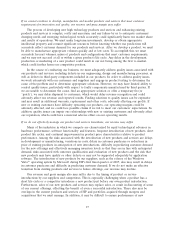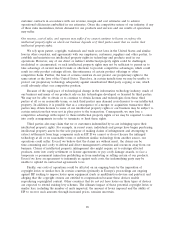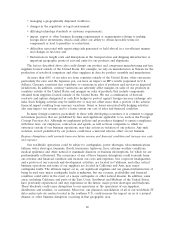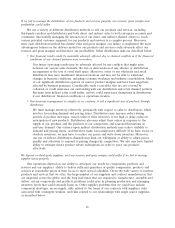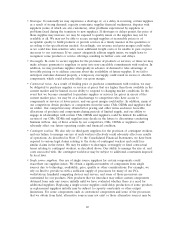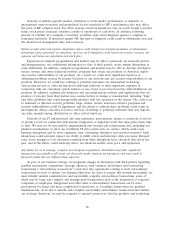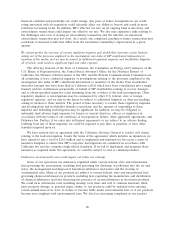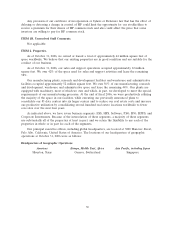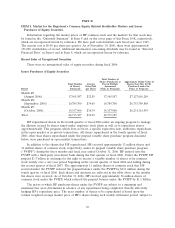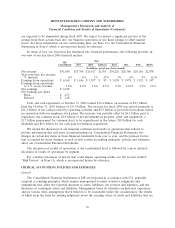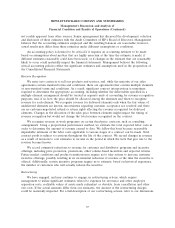HP 2006 Annual Report Download - page 31
Download and view the complete annual report
Please find page 31 of the 2006 HP annual report below. You can navigate through the pages in the report by either clicking on the pages listed below, or by using the keyword search tool below to find specific information within the annual report.internally, we may be at a competitive disadvantage or we may be adversely affected by negative market
perceptions, any of which may have a material adverse effect on our revenue, gross margin and
profitability.
Integration issues are complex, time-consuming and expensive and, without proper planning and
implementation, could significantly disrupt our business. The challenges involved in integration include:
• combining product offerings and entering into new markets in which we are not experienced;
• convincing customers and distributors that the transaction will not diminish client service
standards or business focus, preventing customers and distributors from deferring purchasing
decisions or switching to other suppliers (which could result in our incurring additional
obligations in order to address customer uncertainty), and coordinating sales, marketing and
distribution efforts;
• consolidating and rationalizing corporate IT infrastructure, which may include multiple legacy
systems from various acquisitions and integrating software code;
• minimizing the diversion of management attention from ongoing business concerns;
• persuading employees that business cultures are compatible, maintaining employee morale and
retaining key employees, engaging with employee works councils representing an acquired
company’s non-U.S. employees, integrating employees into HP, correctly estimating employee
benefit costs and implementing restructuring programs;
• coordinating and combining administrative, manufacturing, research and development and other
operations, subsidiaries, facilities and relationships with third parties in accordance with local
laws and other obligations while maintaining adequate standards, controls and procedures;
• achieving savings from supply chain integration; and
• managing integration issues shortly after or pending the completion of other independent
transactions.
We evaluate and enter into significant extraordinary transactions on an ongoing basis. We may not
fully realize all of the anticipated benefits of any extraordinary transaction, and the timeframe for
achieving benefits of an extraordinary transaction may depend partially upon the actions of employees,
suppliers or other third parties. In addition, the pricing and other terms of our contracts for
extraordinary transactions require us to make estimates and assumptions at the time we enter into
these contracts, and, during the course of our due diligence, we may not identify all of the factors
necessary to estimate our costs accurately. Any increased or unexpected costs, unanticipated delays or
failure to achieve contractual obligations could make these agreements less profitable or unprofitable.
Managing extraordinary transactions requires varying levels of management resources, which may
divert our attention from other business operations. These extraordinary transactions also have resulted
and in the future may result in significant costs and expenses and charges to earnings, including those
related to severance pay, early retirement costs, employee benefit costs, asset impairment charges,
charges from the elimination of duplicative facilities and contracts, in-process research and
development charges, inventory adjustments, assumed litigation and other liabilities, legal, accounting
and financial advisory fees, and required payments to executive officers and key employees under
retention plans. Moreover, HP has incurred and will incur additional depreciation and amortization
expense over the useful lives of certain assets acquired in connection with extraordinary transactions,
and, to the extent that the value of goodwill or intangible assets with indefinite lives acquired in
connection with an extraordinary transaction becomes impaired, we may be required to incur additional
material charges relating to the impairment of those assets. In order to complete an acquisition, we
may issue common stock, potentially creating dilution for existing stockholders, or borrow, affecting our
27


